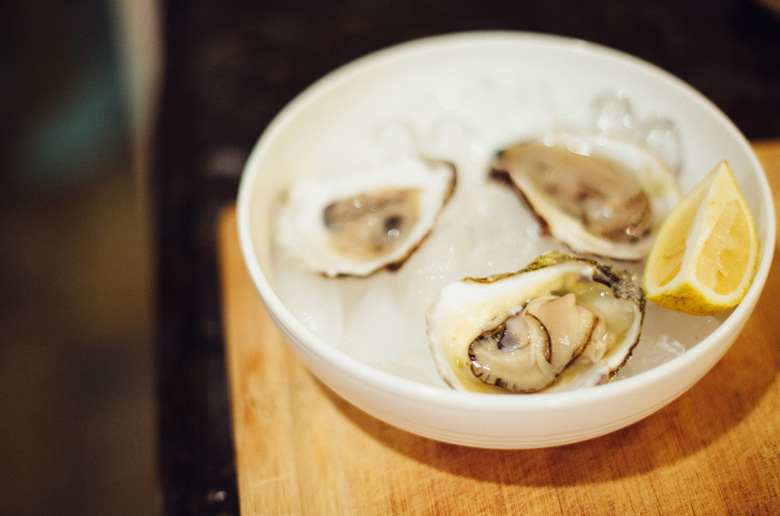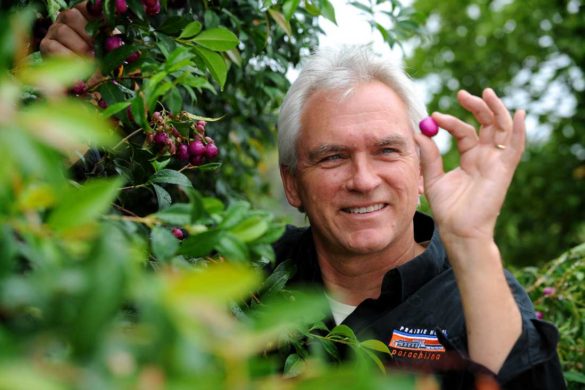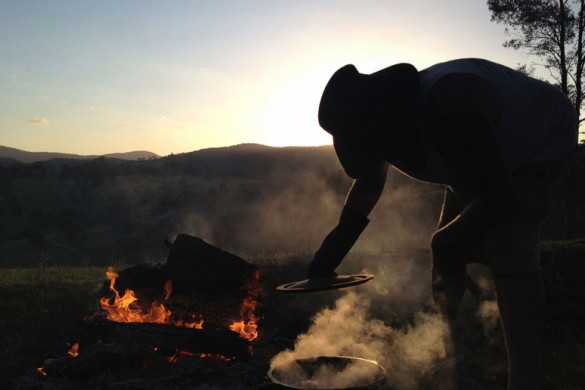Jonathan Swift (author of Gulliver’s Travels) once wrote, ‘He was a bold man who first ate an oyster.’ And he had a point.
No matter how you dress them up, oysters aren’t the most attractive mollusk in the sea. And if they were a bit avante garde in 1726, they’re still a divisive food today. To chew or not to chew? Lemon or Tabasco? Salty and delicious or kind of weird and gross? Opinions are always divided.
But if you fall within the oyster’s general fan club (Kilpatrick people, you don’t count) you probably know that Australia does some of the best in the world. Despite over-fishing in many locations during the middle of the 19th century, the industry has rebounded. Mostly thanks to the introduction of the hardy Pacific species. Now you can find oysters from Moulting Bay to Cape Hawk and everywhere in between. Here are our favourite spots around the country to try fresh oysters:

So delicious! Image c/o Dotpolka, Flickr
Coffin Bay, South Australia
If you had to name an Australian oyster, Coffin Bay in South Australia is probably the one that jumps to mind. Oysters grown here are becoming world-renowned. Not a bad effort, considering the Coffin Bay industry nearly collapsed in the late 19th century. The key to the success of Coffin Bay? The nutrient-rich waters around the sandbanks east of Point Longnose. They give the oysters grown here a seriously salty sea taste that’s prized around the country.
READ THIS: AUSTRALIA FOR ALL SEASONS
Smoky Bay, South Australia
Smoky Bay isn’t far from Coffin Bay, so it’s possible to combine the two spots in some sort of Ultimate South Australian Oyster Pilgrimage. The oysters farmed in Smoky, as you might expect from the name, are known for their hearty and robust flavour.
They pack a bit more of a punch than their Coffin Bay cousins, mostly due to the unsheltered nature of their environment (there isn’t a large headland protecting the oysters beds as there is in Coffin Bay). Smoky Bay oysters are best enjoyed fresh, or with a simple squeeze of lemon: you don’t want to miss that classic taste by smothering them in extra flavour.
FEELING INSPIRED (OR HUNGRY TO SEARCH FOR OYSTERS)? CHECK OUT THESE LAST MINUTE DEALS
Moulting Bay, Tasmania
In the 1950s, the Japanese brought over Pacific oyster spat (that’s baby oysters) and introduced them into Australian waters, first growing them in controlled environments and then turning them loose at places like Moulting Bay in Tassie. Since then it’s fair to say the species has boomed. Moulting now holds the crown as Tasmania’s best oyster producer, and it’s starting to get an international reputation too. The oysters here aren’t as salty as those found on the mainland. Think: creamy with a sweet note on the palate.

Nothing better than fresh oysters! Image c/o Jen, Flickr
Blackman Bay, Tasmania
If you want to impress your oyster-loving friends, just casually drop Blackman Bay into the conversation. It’s the Apple Isle’s up-and-coming oyster producer, with a more punchy flavour than some of the bigger farms further along the coast. Drop into some of the seafood restaurants in Blackman Bay the next time you’re driving through Port Arthur, you won’t be disappointed.
SUBSCRIBE TO OUR NEWSLETTER FOR TRAVEL TIPS, COMPETITIONS, GIVEAWAYS & MORE
Cape Hawk, New South Wales
Although Pacific oyster pretty much dominate the national scene, there are still a few places where the old rock oysters are thriving in their own quiet way. Unlike their Pacific cousins, rock oysters are shallower and a bit more random in their size and shape. They grow better in warmer waters, which is why you’ll find more of them along the coast in NSW as opposed to South Australia or Tasmania.
No need for flashy toppings on rock oyster either. They’re best enjoyed straight up or with a hit of fresh lemon. Don’t be going crazy with your garnishes, people.
Taste the oysters of Coffin Bay on our small group tours along Australia’s Southern Coast and search for Australia’s best oysters. if you have any tips for the best oysters in Australia, tell us below in the comments!
Feature image c/o Patrick, Flickr











